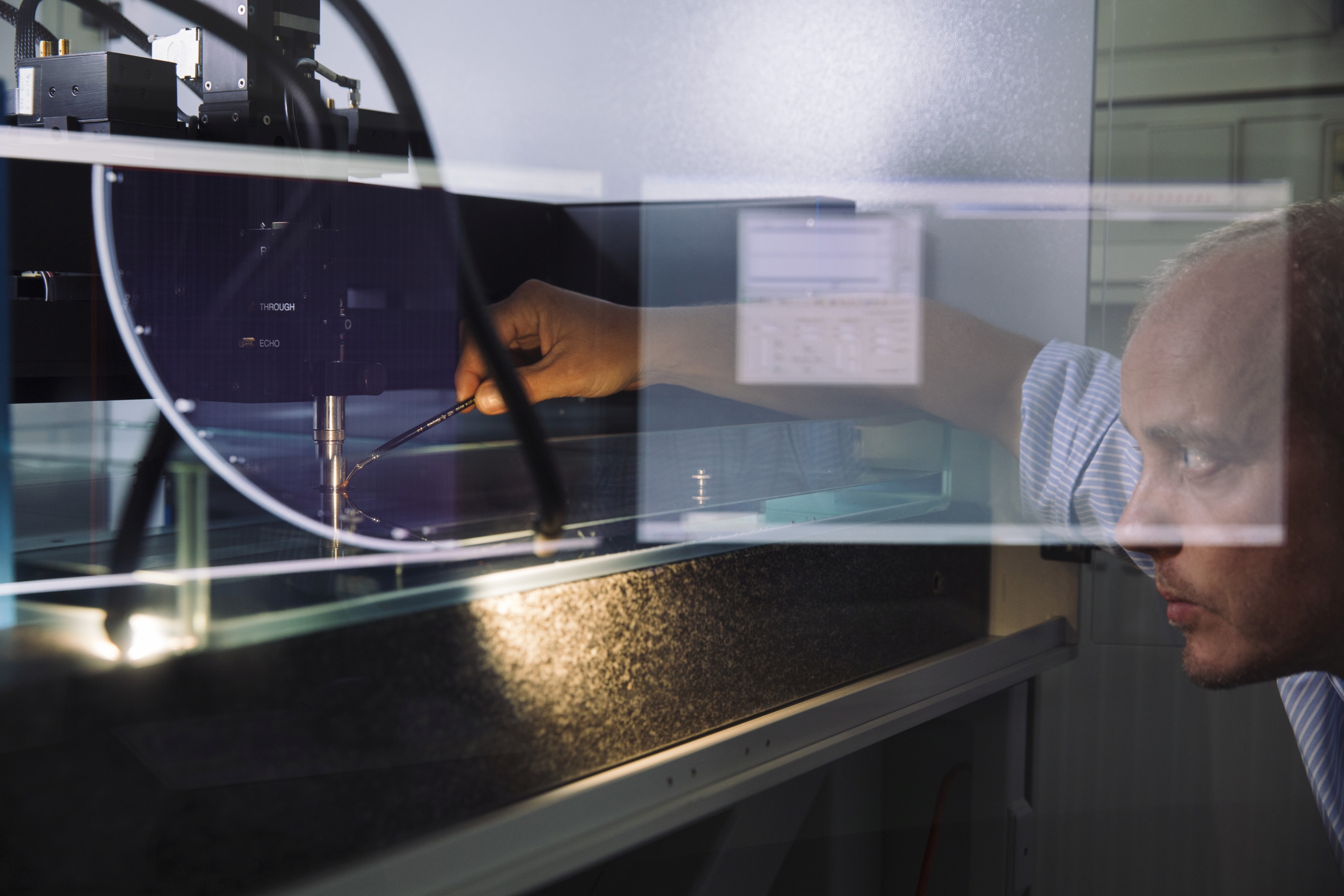New methods for failure analysis of electronic components and systems
Increased reliability of electronic components and systems by reducing the error rate along the value chain: 75 partners from 14 European countries are working together on the »Intelligent Reliability 4.0 (iRel40)« research project with this goal in mind under the leadership of Infineon Technologies AG. The Fraunhofer Institute for Microstructure of Materials and Systems IMWS (Fraunhofer-Institut für Mikrostruktur von Werkstoffen und Systemen IMWS) is developing new concepts and methods for physical failure analysis and the creation of failure models. With this project, the consortium is paving the way for technologies such as autonomous driving and strengthening the competitive position of German and European industry.

Future technologies such as autonomous driving, the Internet of Things, electromobility or intelligent solutions for energy efficiency and medical technology require increasingly powerful electronic components and systems. They will only be successful if users can rely on the robustness of the electronics used. The European research project »Intelligent Reliability 4.0 (iRel40)«, which runs until May 31, 2022, aims to make a decisive contribution to this. Leading global experts from industry and science have joined forces to optimize the entire electronics development process from the wafer/chip, the housing and board up through the system for reliability and service life.
"The challenges are already considerable today. The trend towards miniaturization means that more and more functionality is being packed into an ever smaller volume. Being able to examine individual components or detect the smallest of errors there is only possible with advanced development of the corresponding processes," says Frank Altmann, who heads the Fraunhofer IMWS subproject. “For future, even more complex requirements, small improvements of these technologies will no longer suffice. We need major advances and new approaches, for example through the use of artificial intelligence and machine learning. That is exactly what the consortium wants to achieve with concentrated knowledge from physics, chemistry, materials science and electronics.”
The institute in Halle will develop failure models for specific reliability risks and innovative methods for material characterization and physical analysis, always in relation to the requirements of new failure modes and degradation mechanisms. Together with partners, the Fraunhofer IMWS is involved in several of the six work packages of »Intelligent Reliability 4.0 (iRel40)« and in particular is contributing its expertise and methodological skills in material characterization, modeling, high-resolution microstructure analysis and physical failure diagnostics. “This deep understanding through 'Physics of Failure' is essential to get as close as possible to the ideal of completely error-free applications. Unfortunately, it is rather unrealistic to expect that no defects will occur at all. But we think the goal of increasing the operational lifetime of electronics in automobiles by a factor of 10, for example, is feasible,” says Altmann.
Together with his team, he is particularly interested in semiconductor technologies based on gallium nitride (GaN). These enable higher switching frequencies than silicon-based solutions, together with the highest energy conversion efficiencies and high miniaturization at system level. When using this new material, however, it is also necessary to investigate and ultimately control possible new degradation processes and failure risks. In the project, degradation models for GaN components are being developed to evaluate the causes and the chronological sequences for electrical, thermal and mechanical stress-induced defects or those that may occur during the manufacturing process.
In addition, the Fraunhofer IMWS is researching the effects of material contamination from the chip and packaging level on reliability risks in wafer bonding. The aim is to develop improved methods to detect defects caused by contamination. The research team is also investigating how moisture corrosion, contamination and the dielectric strength of plastic encapsulation materials used in power electronics affect reliability and is developing the requisite new analysis methods and failure models.
“For all these questions, we can rely on first-class analytical technology and extensive previous knowledge, whether in GaN, acoustic microscopy, the analysis and evaluation of corrosion processes of microelectronic components or physical and chemical trace analysis. So we are looking forward to working with many prestigious partners and are confident that we can make a significant contribution here,” says Altmann.
Other work packages in the project, which is part of the European development project ECSEL (Electronic Components and Systems for European Leadership), will, for example, explore the opportunities provided by new sensors to enable the prediction of future system failures. This is a prerequisite for concepts such as "Smart Maintenance" and the real-time control of process steps. At the same time, such data can provide a digital image of materials, components and systems ("digital twin"), which facilitates further optimization and can help to understand underlying effects more quickly and selectively influence them, thus increasing reliability and service life.
This is a modal window.